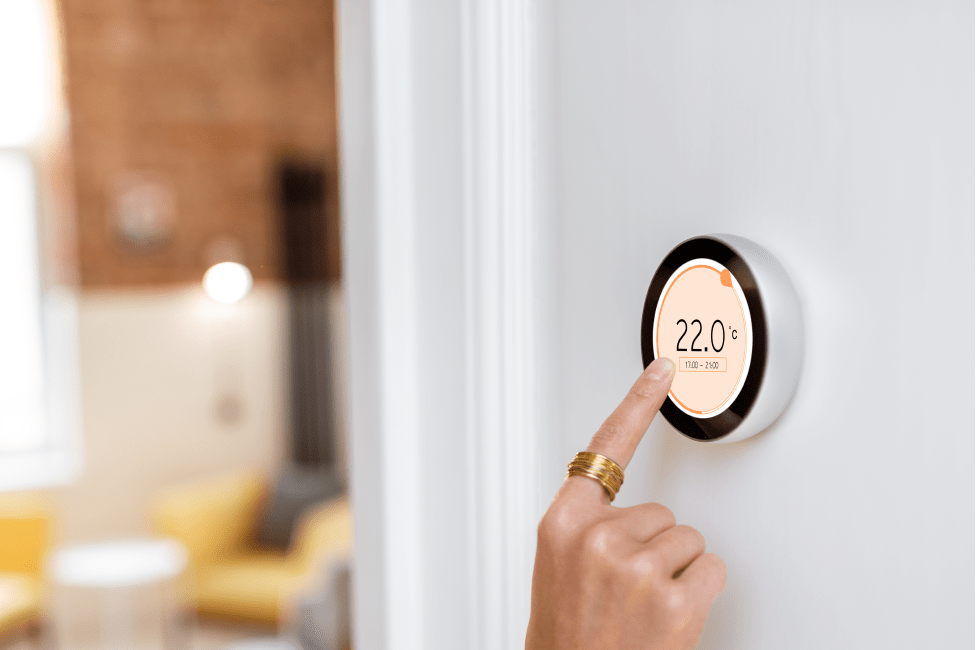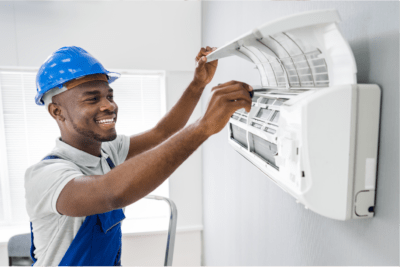Although investing in high-efficiency HVAC systems will certainly have an impact, there are plenty of other things you can do to scale back on energy consumption in your home. In addition to helping to reduce your carbon footprint, you’ll also be saving more on utility bills. It’s a win-win! The best part is that many of these tips are a lot easier than you think. Here are a few easy changes you can start making now to use less energy at home.
Adjust Your Thermostat Settings
Turn down your AC or furnace at night and when you’re not home. You’ll hardly notice the difference in temperature, but you’ll definitely see the change on your energy bills. The amount of savings will vary from home to home but adjusting the settings by 6°C degrees can reduce the amount of gas used by as much as 13% and 0.8% less energy consumption, according to Statistics Canada. A programmable smart thermostat will make it even easier. You’ll be able to schedule when your AC or heating automatically kicks in and can store multiple settings for each day. Depending on which model you choose, you can also make changes right from your phone when you need to.
Pay Attention to Lighting
Turn off the lights when you leave a room and open up window coverings to use natural lighting when you can. Swap your bulbs for LED options instead to increase your energy savings even more.
Work with the Sun
When it’s cold outside, open up the blinds or drapes in the sunniest areas of your home to allow the sun to warm your home naturally. When it’s hot out, keep the shades closed to avoid adding extra heat from the sun and forcing your AC to work extra hard.
Wash with Cold Water
Using hot water to do laundry requires more energy per load, so try switching to cold washes instead. In addition to energy savings, washing with cold water can actually help your clothes last longer, too, since it’s known to slow fading and shrinking. For even more savings, consider investing in the CleanStart laundry system. It only needs cold water to work and even reduces, if not eliminates, the need for detergent. It works by transforming cold water into a powerful cleaning agent by oxidizing it with a controlled amount of ozone when it’s washing, resulting in clean, fresh-smelling laundry.
Add a Towel to Reduce Drying Time
Speaking of topic of laundry, here’s a handy tip for cutting down on electricity usage when running the dryer. Once you’ve put your wet clothes in the dryer, add a dry towel to the load. It’ll absorb some of the extra moisture and can cut your drying time in half.
Check for Leaks
Air leaks around doors and windows can be a huge source of heat loss, particularly in the colder months and especially around the door from the house to the garage, since this area tends to not be as well sealed as doors that lead directly outside. Seal leaks around doors by installing a door sweep can help keep cold air out and warm air in, which can lead to energy savings.
Unplug Unnecessary Electronics
Even when things are plugged in but not in use, they’re using energy. So, turn off and unplug any electronics that you don’t need, like cell phone chargers, computers, hair dryers, small kitchen appliances, and so on.
Upgrade Your HVAC Systems
Today’s high-efficiency HVAC systems are designed to use less energy and save you more money. If your equipment is more than 10 years old, it may be time to upgrade. You don’t even have to worry about forking out a hump lump sum up front—you can now lease your equipment with no installation costs or hidden fees, affordable monthly payments, 24/7 service line, $0 repairs, and more. Contact us to learn more about your options.




